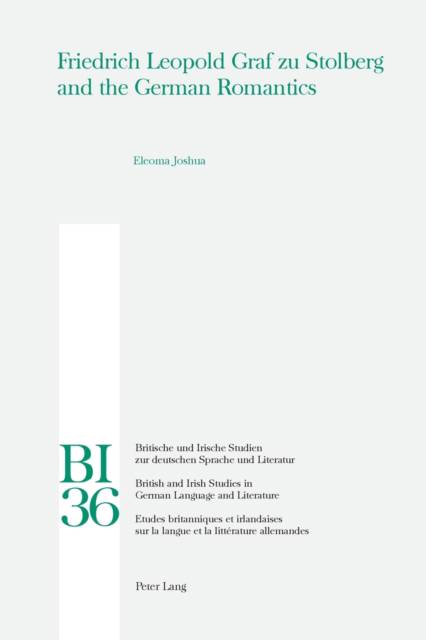
- Afhalen na 1 uur in een winkel met voorraad
- Gratis thuislevering in België vanaf € 30
- Ruim aanbod met 7 miljoen producten
- Afhalen na 1 uur in een winkel met voorraad
- Gratis thuislevering in België vanaf € 30
- Ruim aanbod met 7 miljoen producten
Zoeken
Omschrijving
This study examines the life and works of the poet Friedrich Leopold Graf zu Stolberg (1750-1819). It begins with an analysis of Stolberg's essays on poetic expression in relation to Romantic thinking, and the impact of his poetic style on Novalis's early poetry. Stolberg's aesthetic education in Italy is examined as well as his challenge to the idea that classical sculpture was always the pinnacle of beauty and that the culture of antiquity was the highest form of humanity. The detection of melancholy in Greek sculpture, which arises from the transfer of anxieties about redemption from the artist to the artefact, affected his response and detracted from the beauty of the sculpture. This view amounted to an attack on Goethe and Schiller, as it identified the issue of salvation and death as a weakness in the classical paradigm. The picture of Italy that Stolberg offered was overshadowed by a crisis of confidence in the aesthetic insights both of Winckelmann and of Lessing and was also the basis for his reception of Raphael and Michelangelo. Stolberg arrived at a response to Renaissance art and artists that marginally predates the early German Romantic worship of artists in the 1790s. The book concludes with a discussion of Stolberg's support of Romantic politics and Romantic conversions.
Specificaties
Betrokkenen
- Auteur(s):
- Uitgeverij:
Inhoud
- Aantal bladzijden:
- 210
- Taal:
- Engels
- Reeks:
- Reeksnummer:
- nr. 36
Eigenschappen
- Productcode (EAN):
- 9783039102570
- Verschijningsdatum:
- 3/12/2004
- Uitvoering:
- Paperback
- Formaat:
- Trade paperback (VS)
- Afmetingen:
- 152 mm x 229 mm
- Gewicht:
- 285 g

Alleen bij Standaard Boekhandel
+ 251 punten op je klantenkaart van Standaard Boekhandel
Beoordelingen
We publiceren alleen reviews die voldoen aan de voorwaarden voor reviews. Bekijk onze voorwaarden voor reviews.








